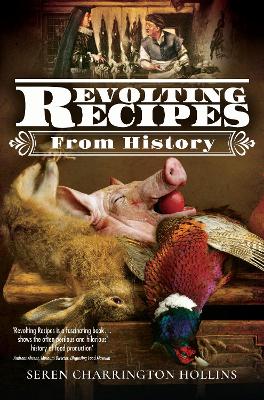Reviewed by annieb123 on
Revolting Recipes From History is a humorous, honest, and well curated choice of culinary oddities, weird combinations, and potentially dangerous foods by food historian Seren Charrington-Hollins. Due out 30th April 2022 from Pen & Sword, it's 216 pages and will be available in hardcover format.
The author does a very good job of exploring the real cultural and biological background behind some people's visceral reaction to different widely divergent foodstuffs. Why do we react with revulsion when faced with fermented shark and/or lye treated - saponified whitefish when people in some places consider them a delicacy? It should be noted that the book does not contain actual recipes (and most of the subjects are for things I can't imagine actually eating; certainly not willingly).
Although admittedly a niche book, it's well annotated throughout and the author writes knowledgeably on the subject, The bibliography is comprehensive and will provide many hours of further reading and information. The book is largely without illustrations, but there are a number of facsimile adverts and period photographs and documents contained at the back. I especially enjoyed seeing the period ads for frog farming (for fun & profit), and the very early tinned and preserved foods.
As a historical insight, I found it fascinating and devoured it (haha) cover to cover. This was well worth the read, and for recreators and SCAdians (and the like) this would make really great source material.
Five stars. Weirdly fascinating.
Disclosure: I received an ARC at no cost from the author/publisher for review purposes.
Reading updates
- Started reading
- 17 April, 2022: Finished reading
- 17 April, 2022: Reviewed
